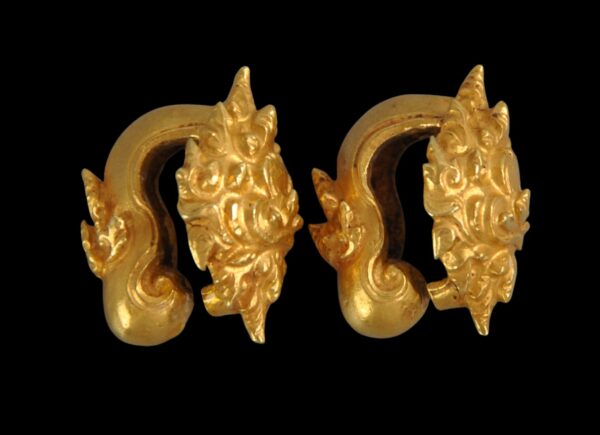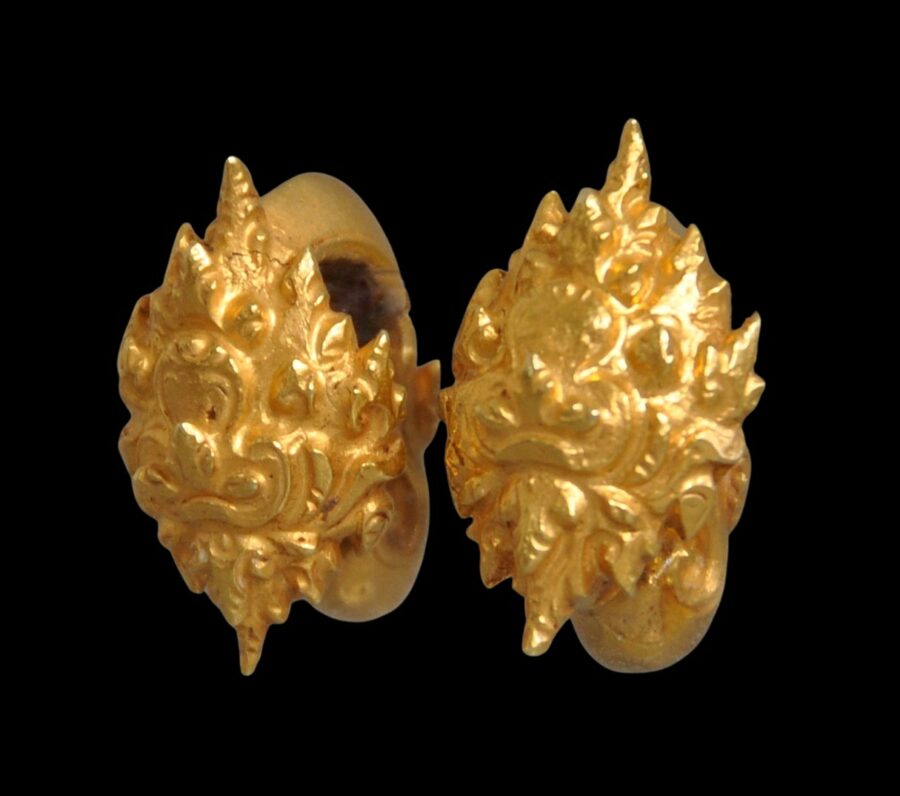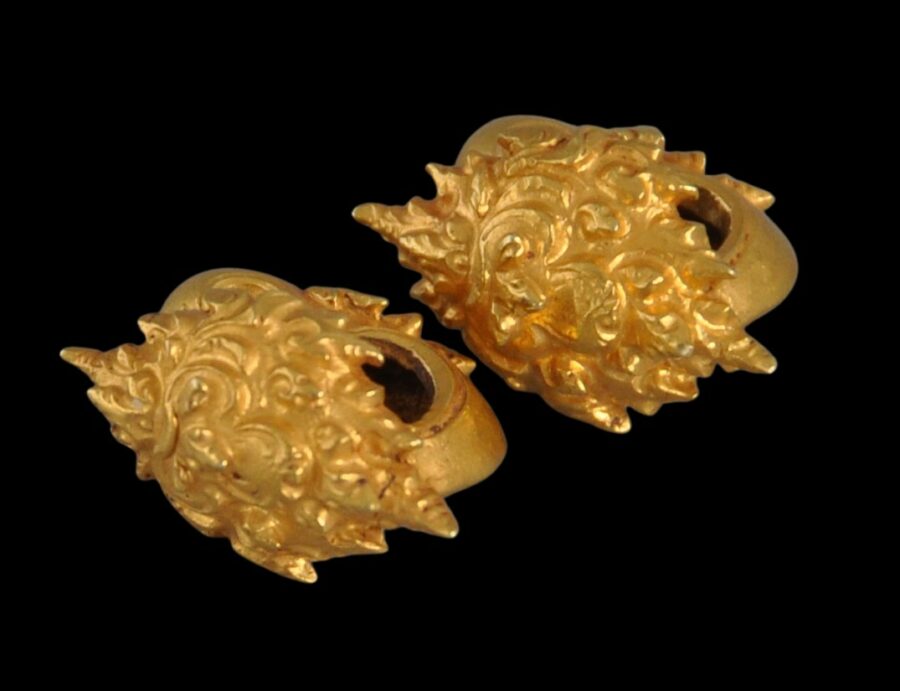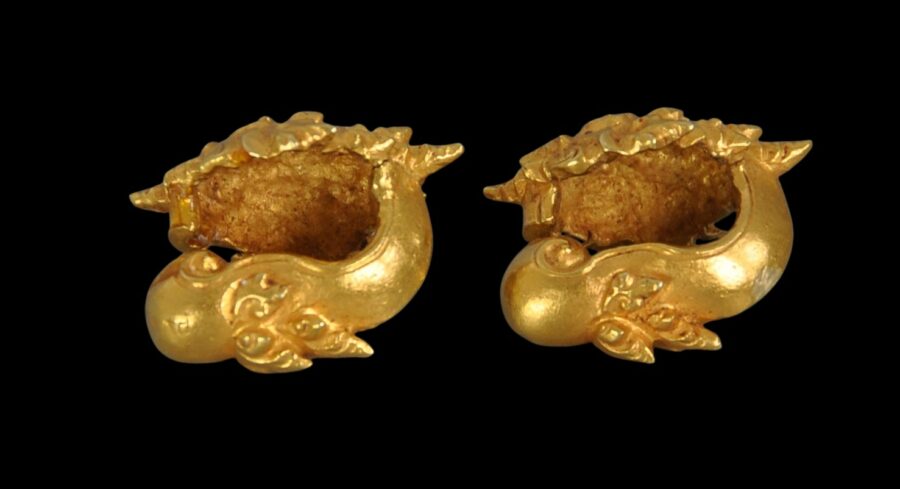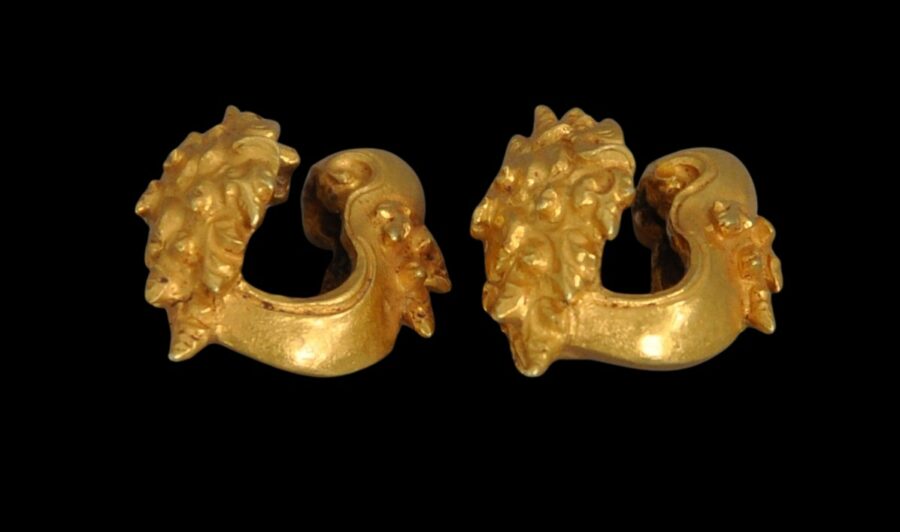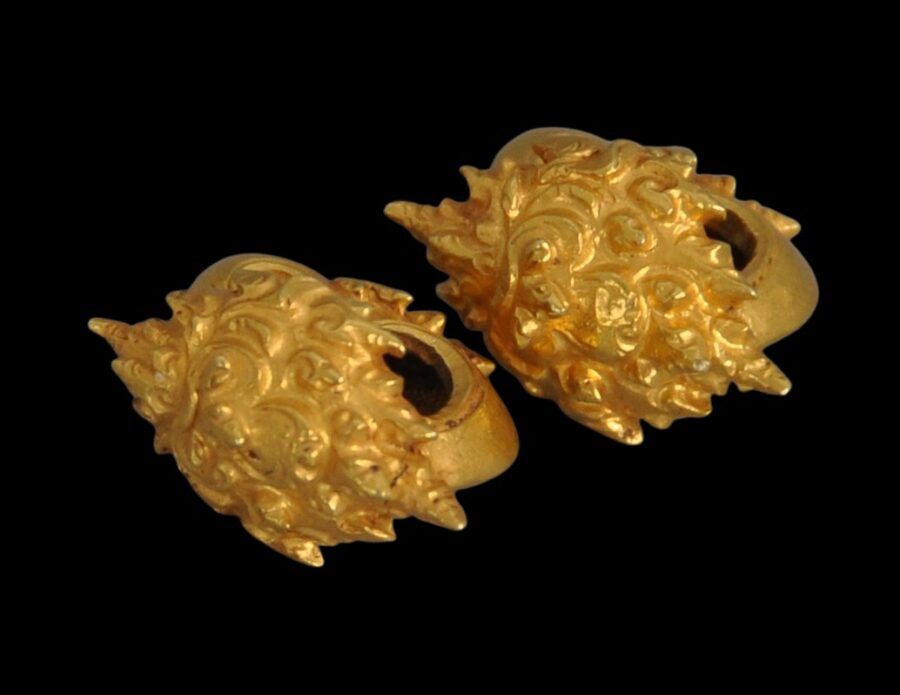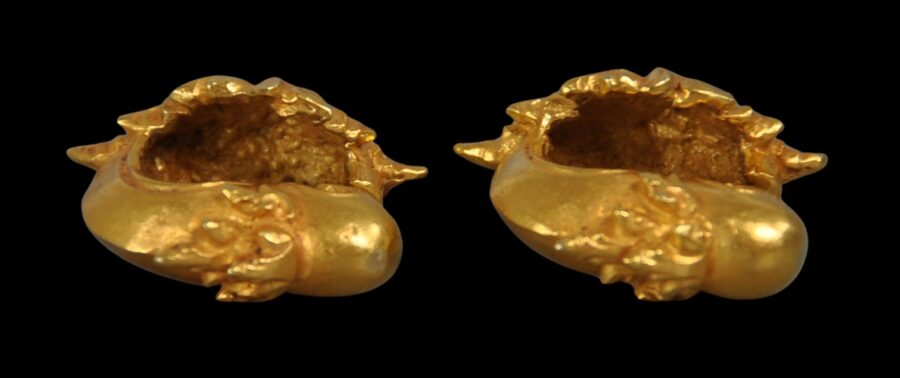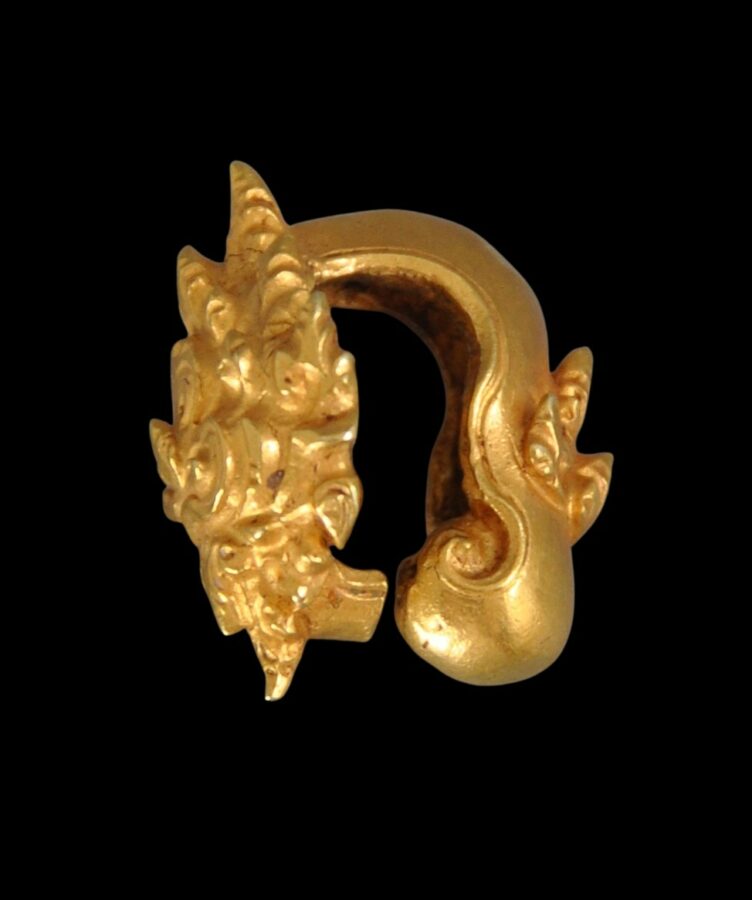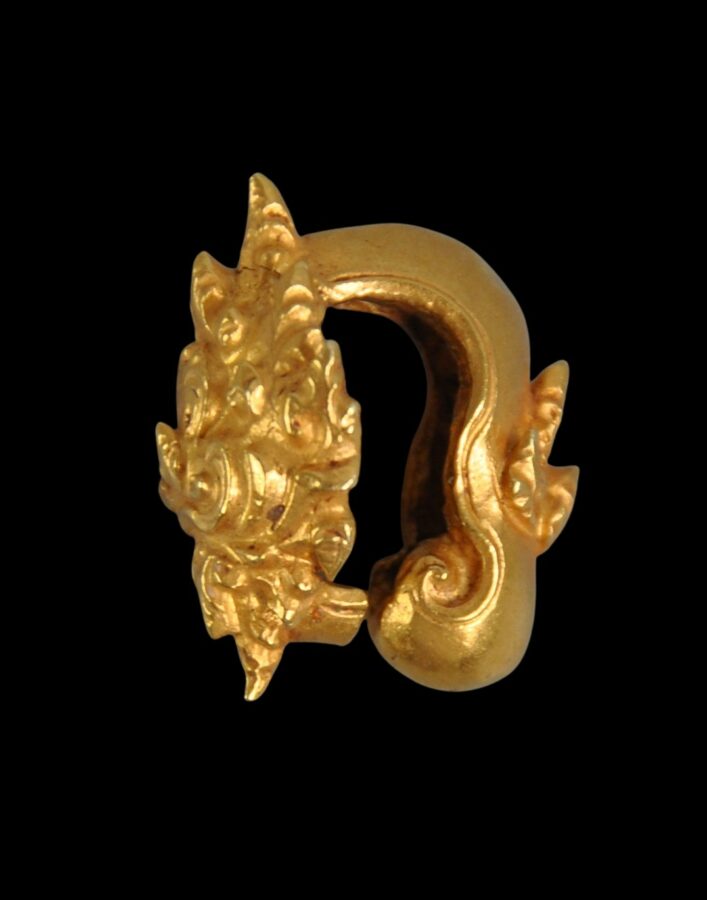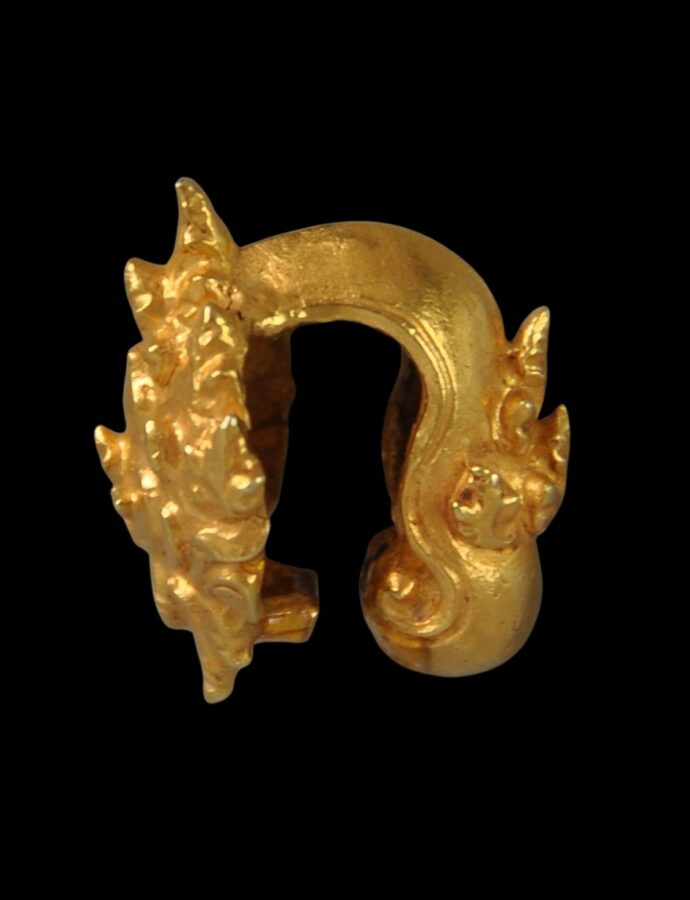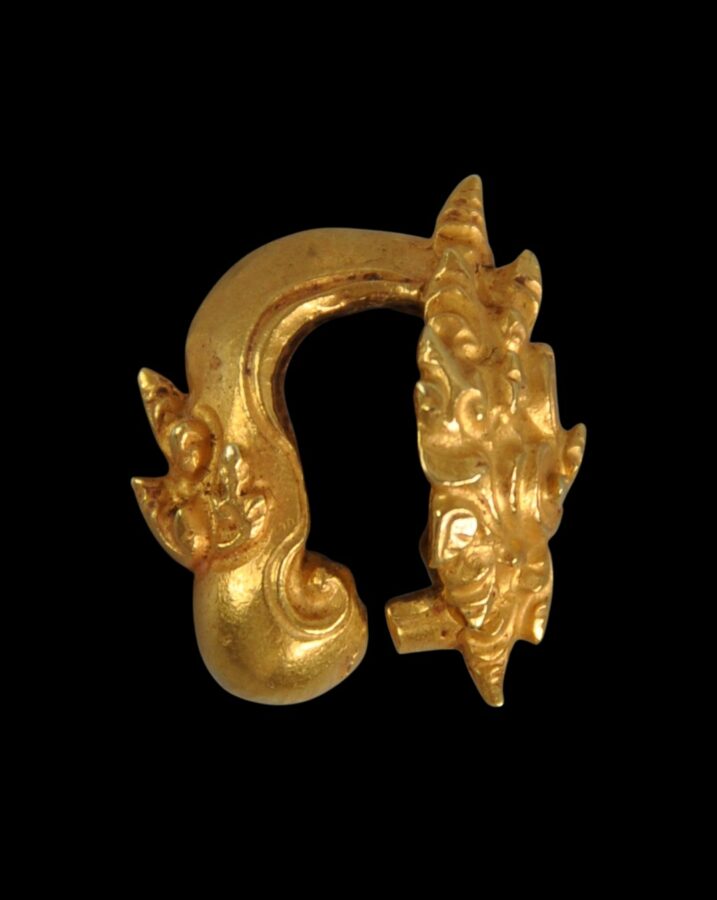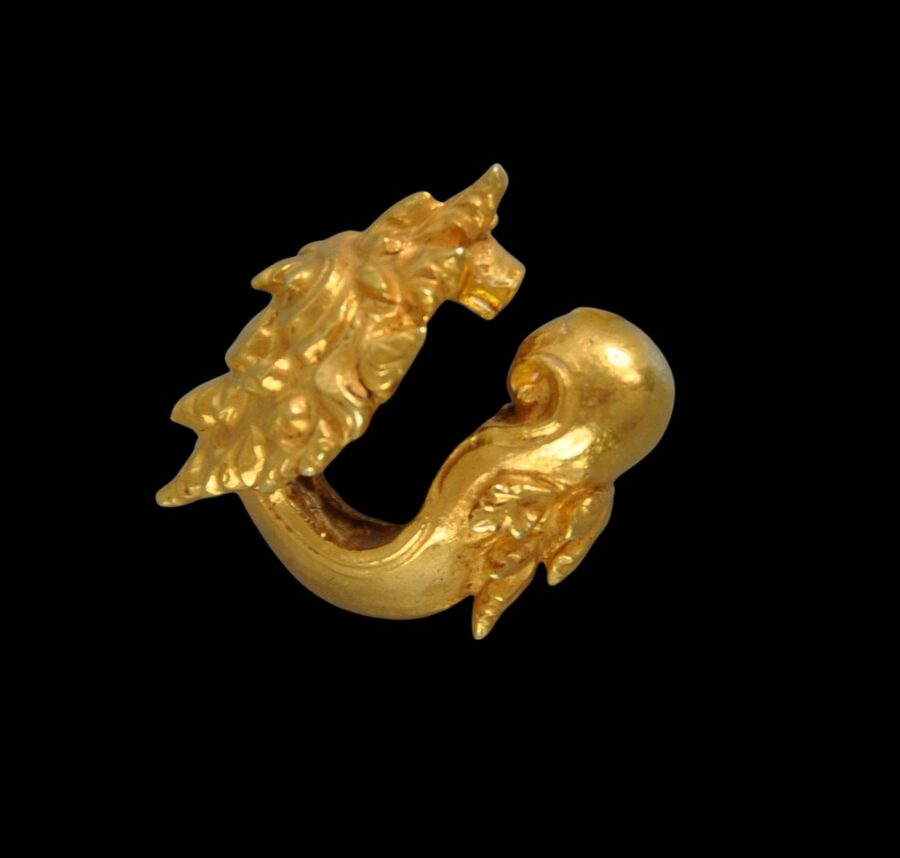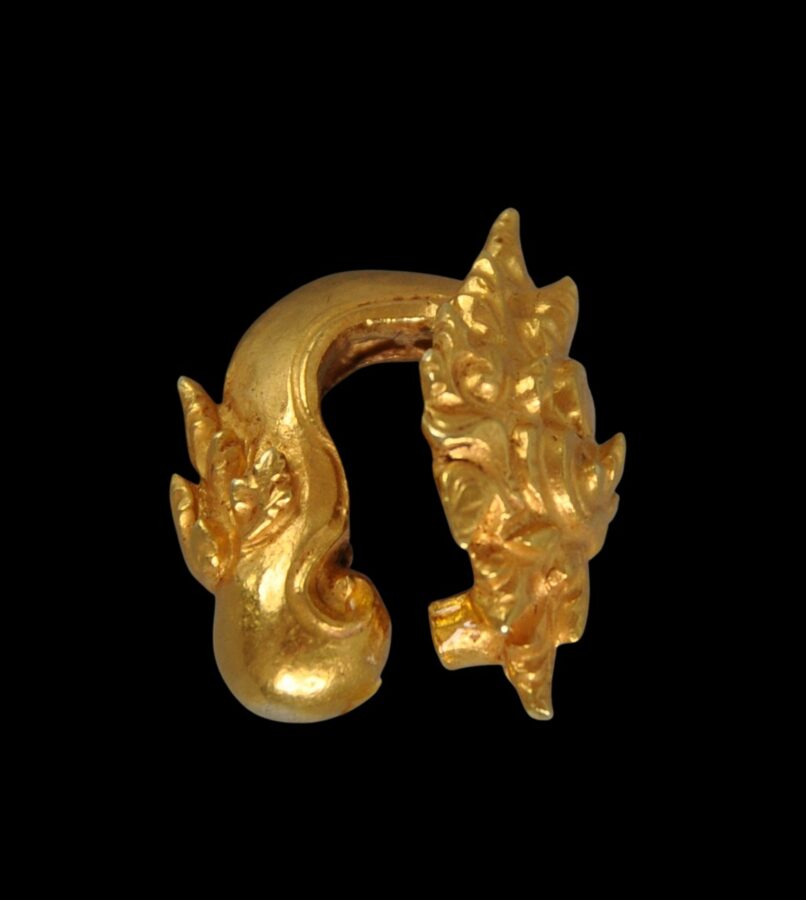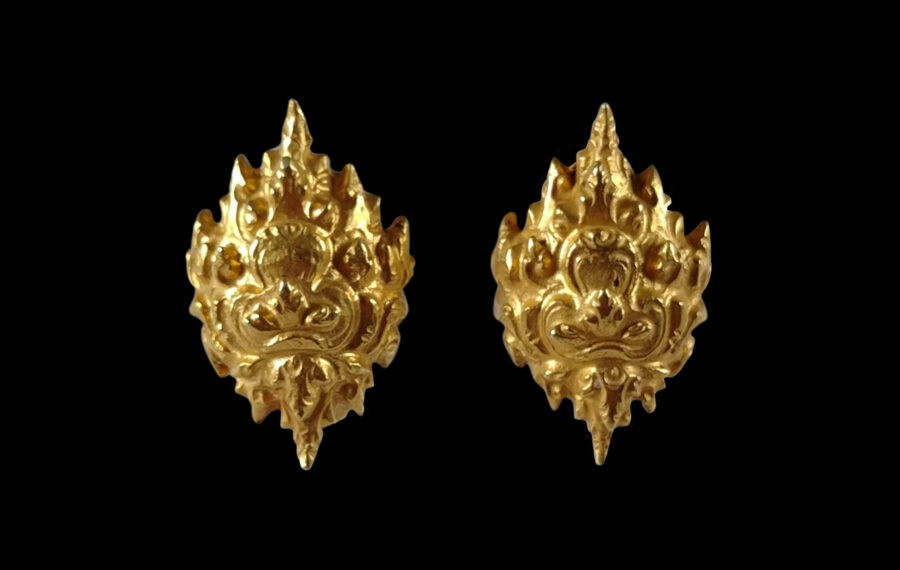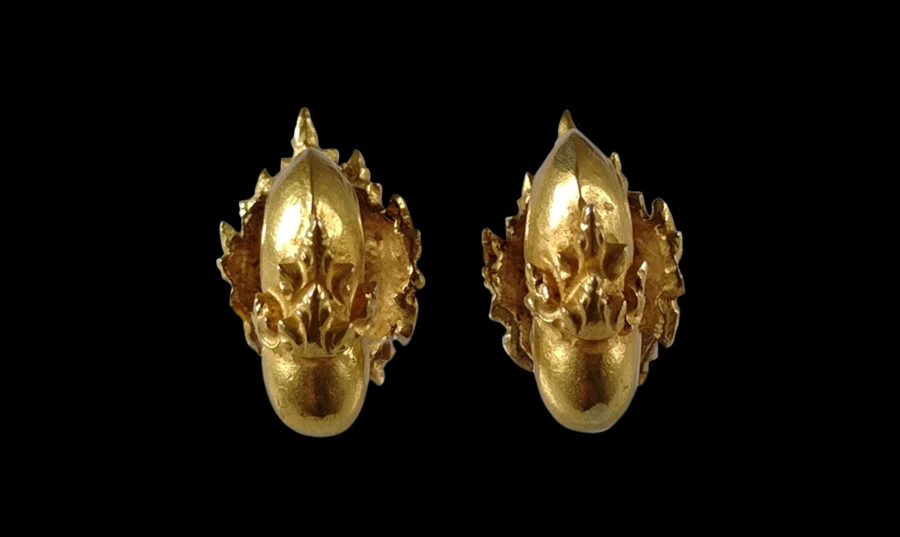This pair of solid cast gold ear ornaments dates to around the 13th-14th century and originates in East Java. The front of each has been cast with a dynamic form that suggests a stylised monster kala mask surrounded by spiky flames, and would have served as a protective device against evil. The reverse of each is cast with a leafy flourish and then a curved terminal, all suggestive of an elephant mask. The terminal is heavy and solid and served as a counter weight to allow the ornament to sit in the earlobe in a more stable fashion.
Each is heavy for its size and has a small opening to allow it to be worn on an elongated ear lobe.
Such ear ornaments were worn in both ears.
Such ear ornaments were cast using the lost-wax process.
The Majapahit Kingdom was a Hindu-Buddhist maritime kingdom centred on Java from the late 13th to the early 16th century.
Both ear ornaments here are in a fine condition. One has a shallow crack to the goldwork at the top but this seems stable and consistent with its great age. Overall, it is rare to find an actual pair of ornaments from this period.
References
Bremer, S., Goud der Goden: Uitt het oude Java, Wereldmuseum Rotterdam Publishers, 2014.
Lunsingh Scheurleer, P., Gold from Java/Goud uit Java, Gemeentemuseum Den Haag/W Books, 2012.
Miksic, J., Old Javanese Gold, Ideation, 1990.
Polak, J., Ancient Indonesian Gold of the Central and Eastern Javanese Periods 750-1550: A Selection, C. Zwartenkot Art Books, 2022.


